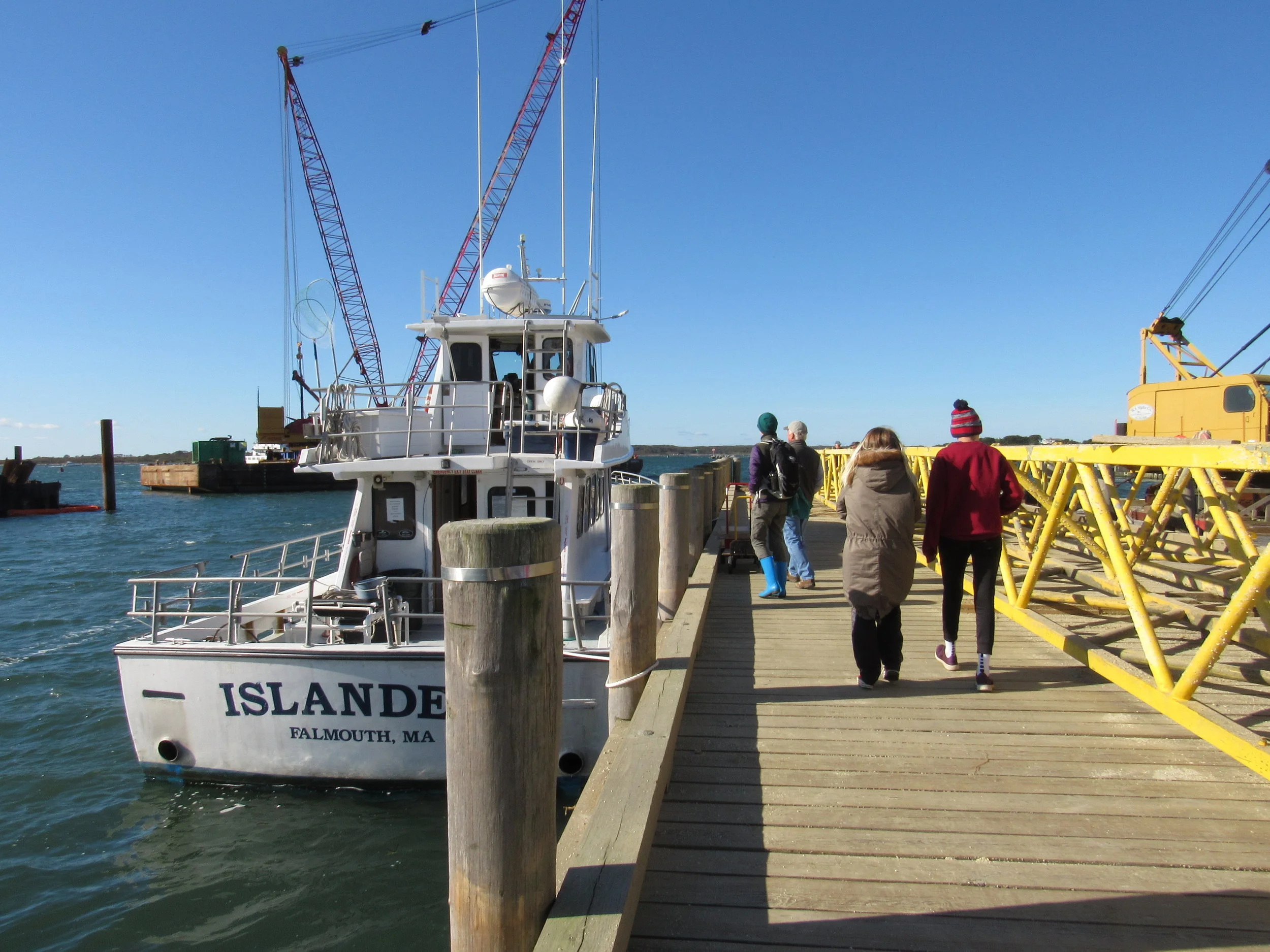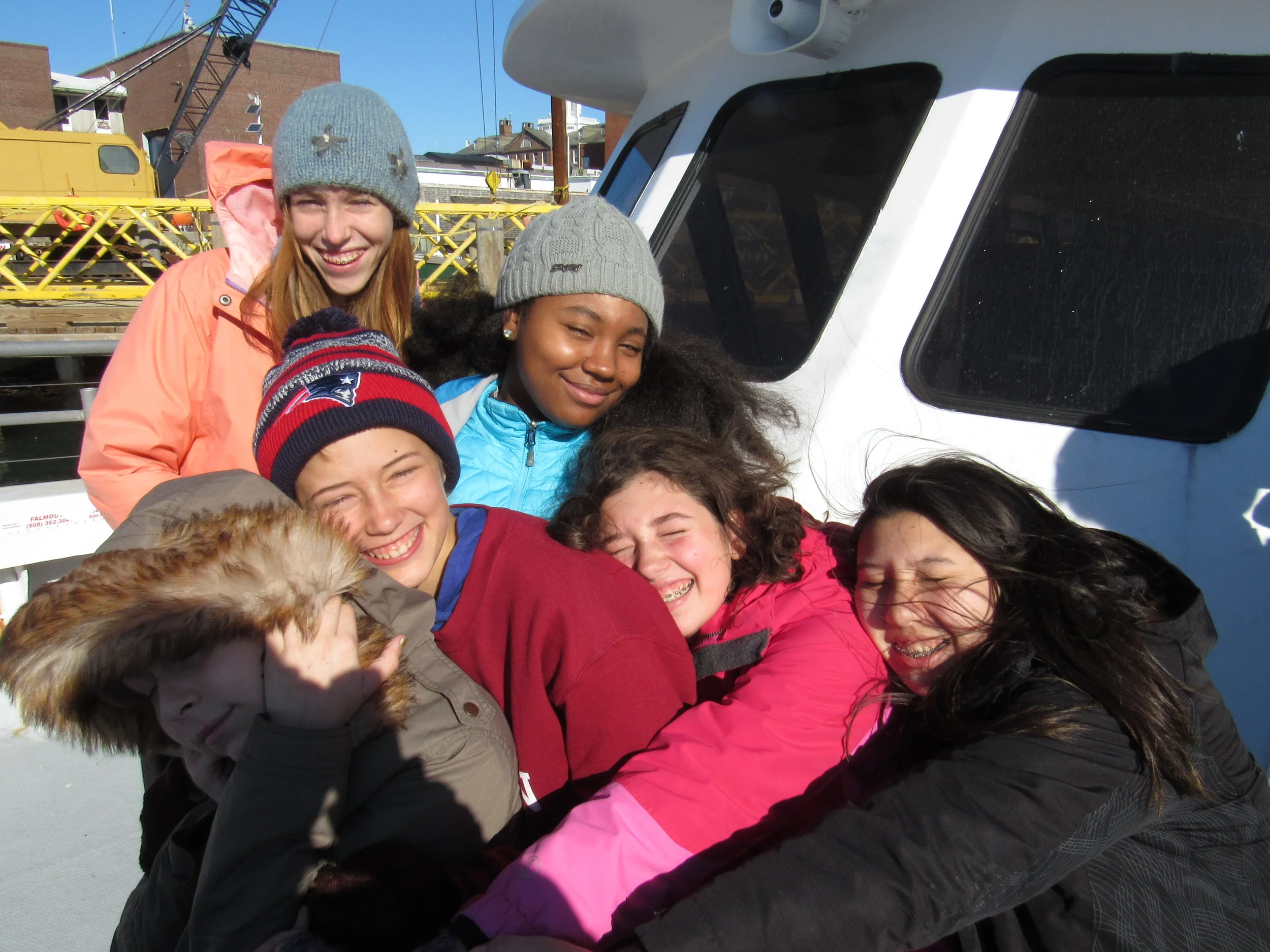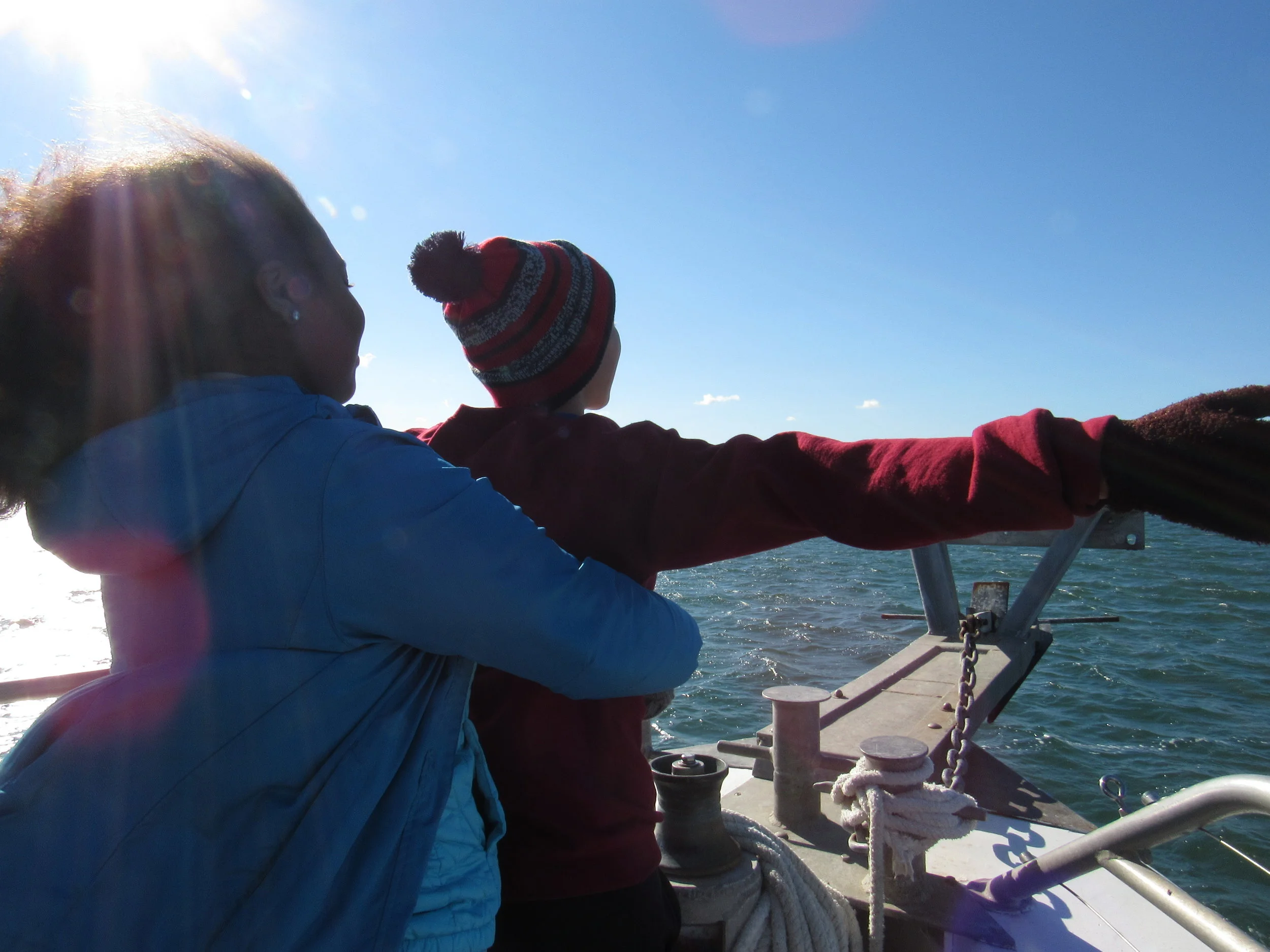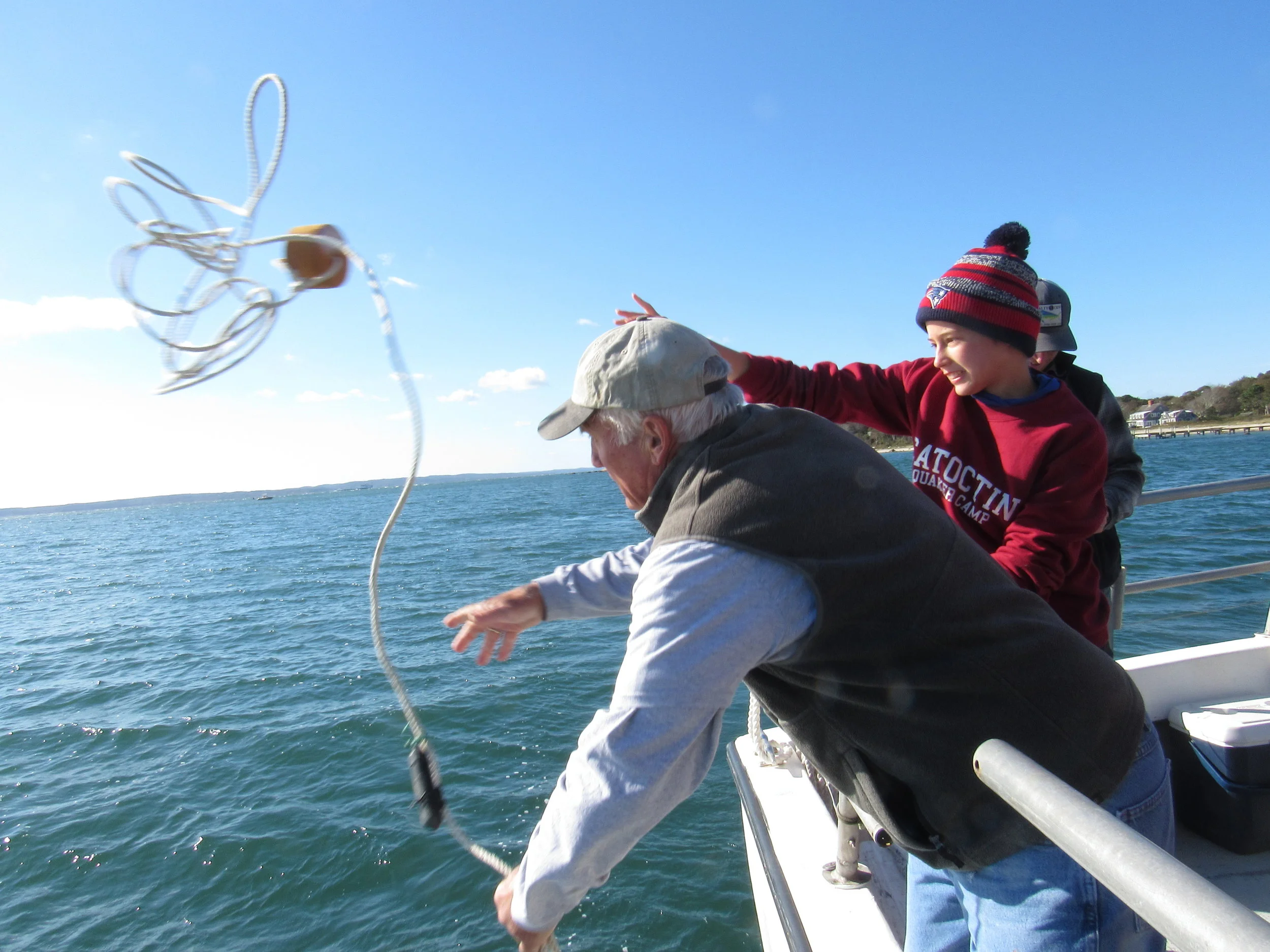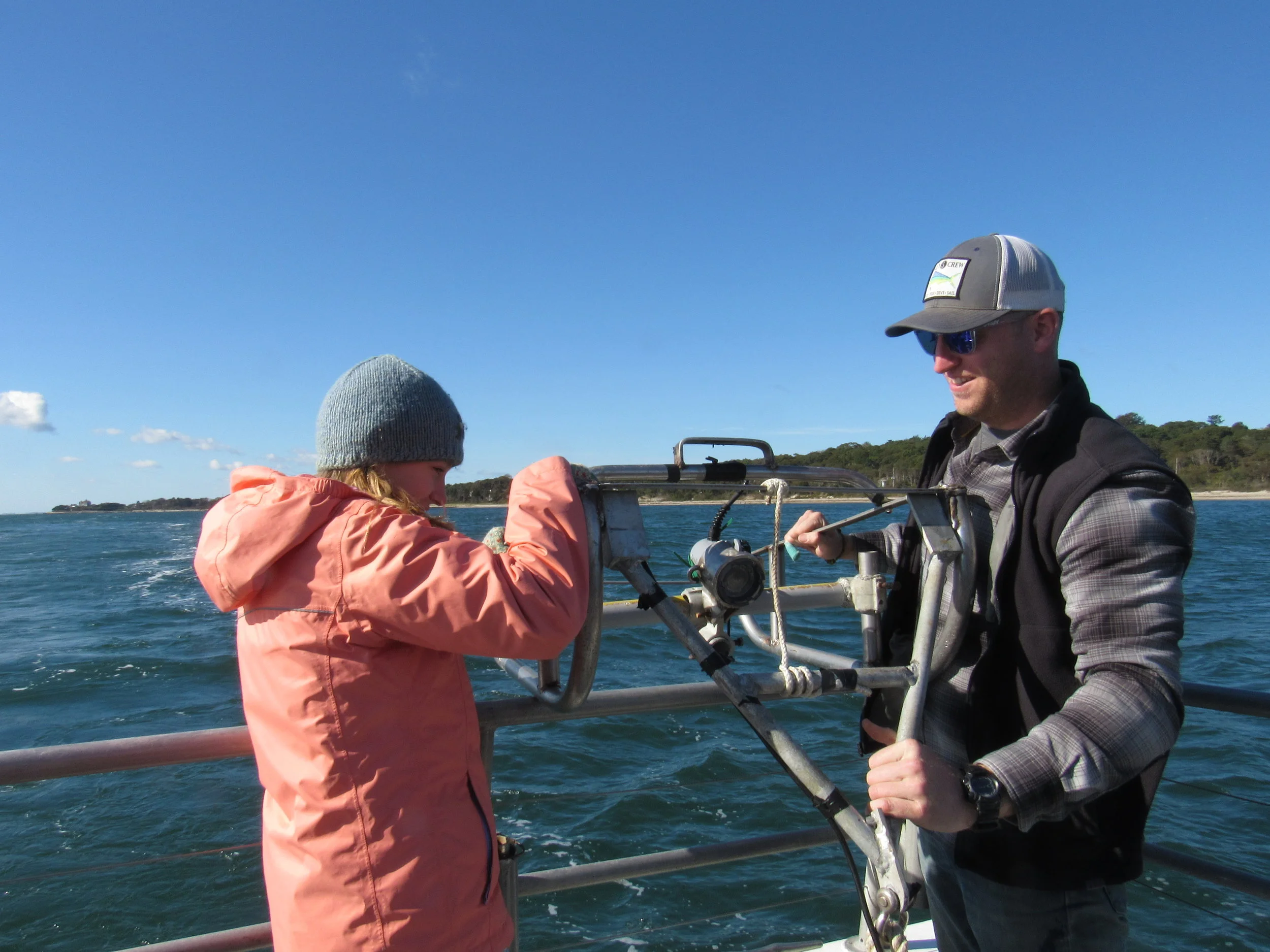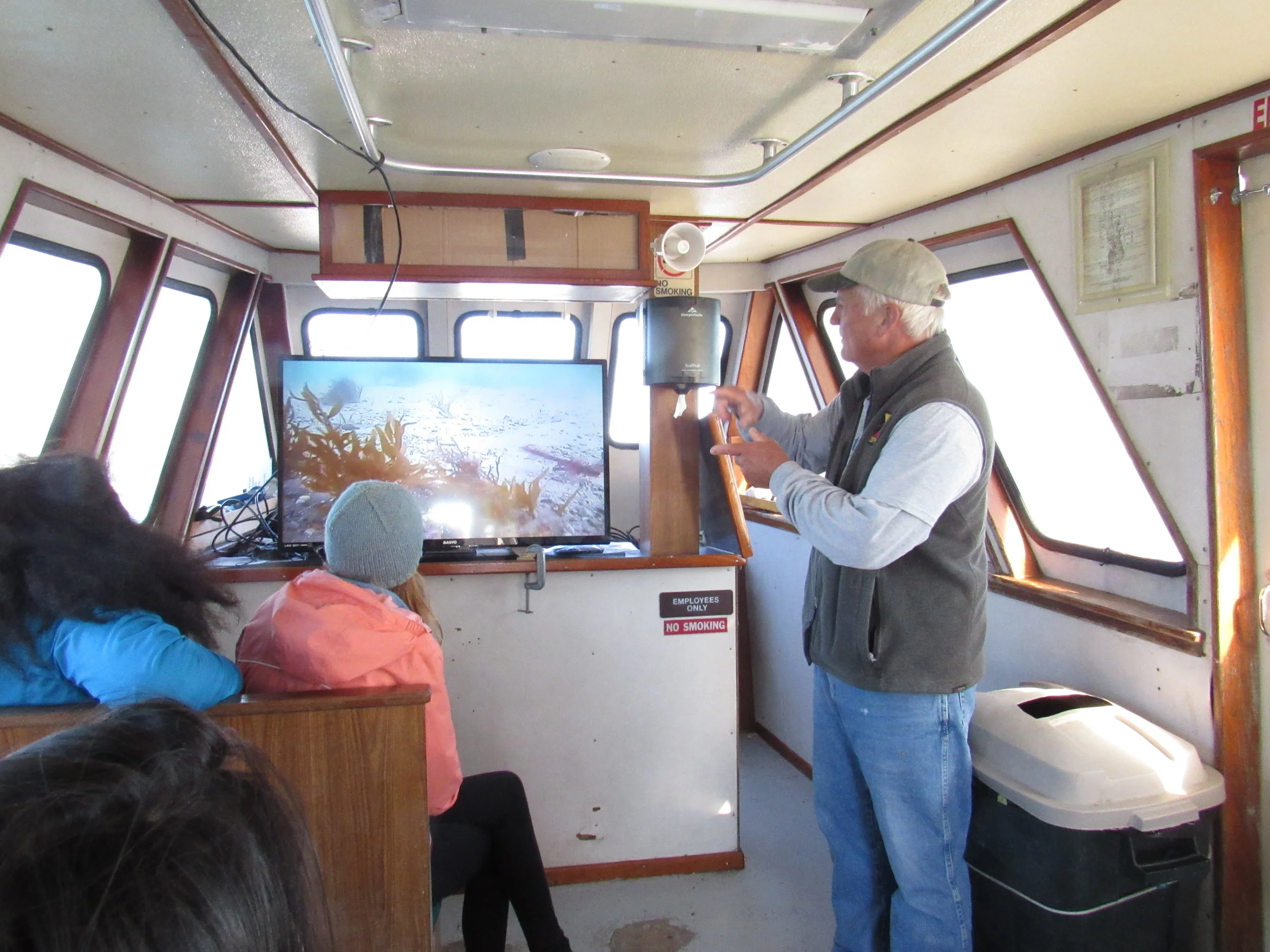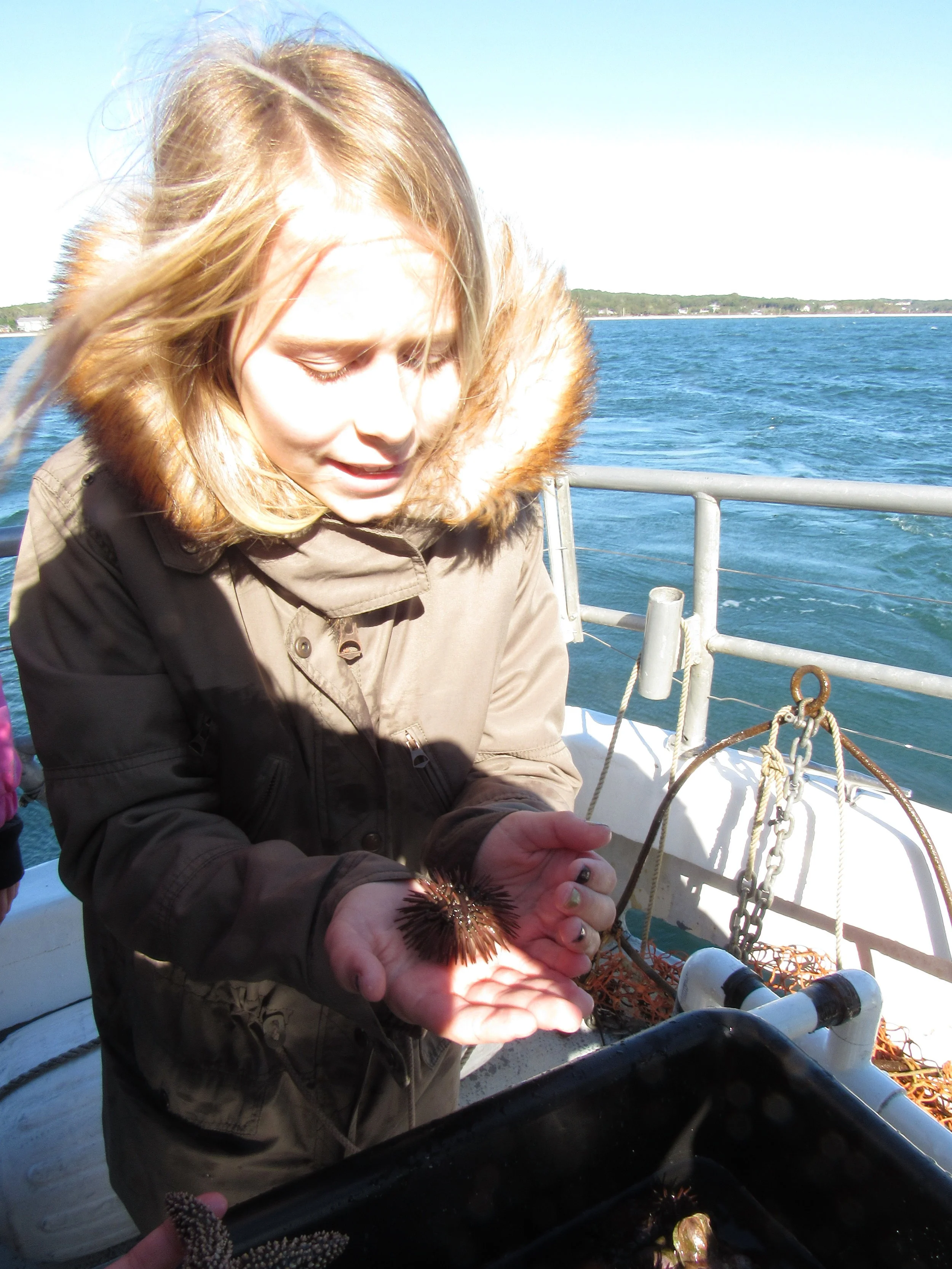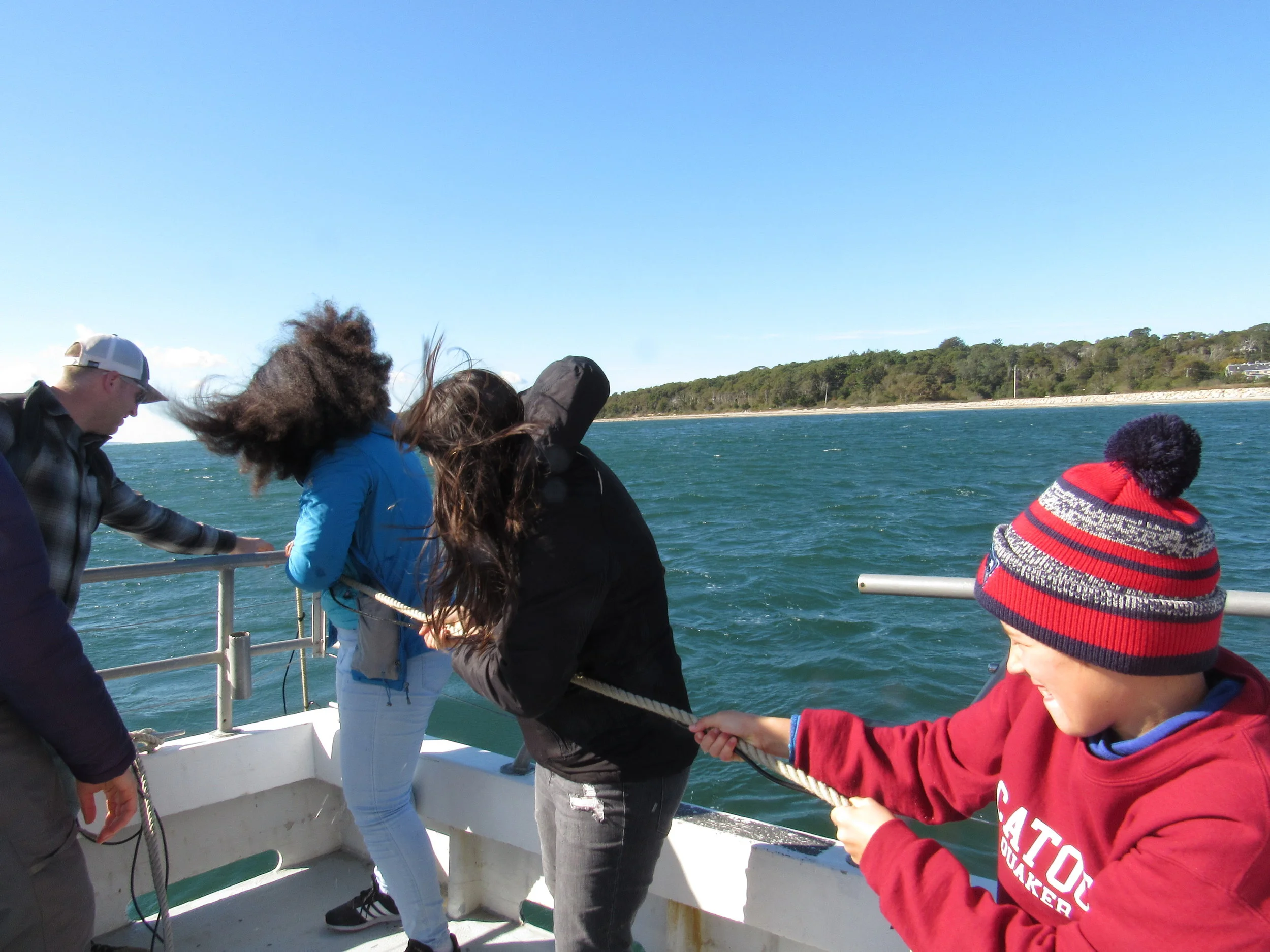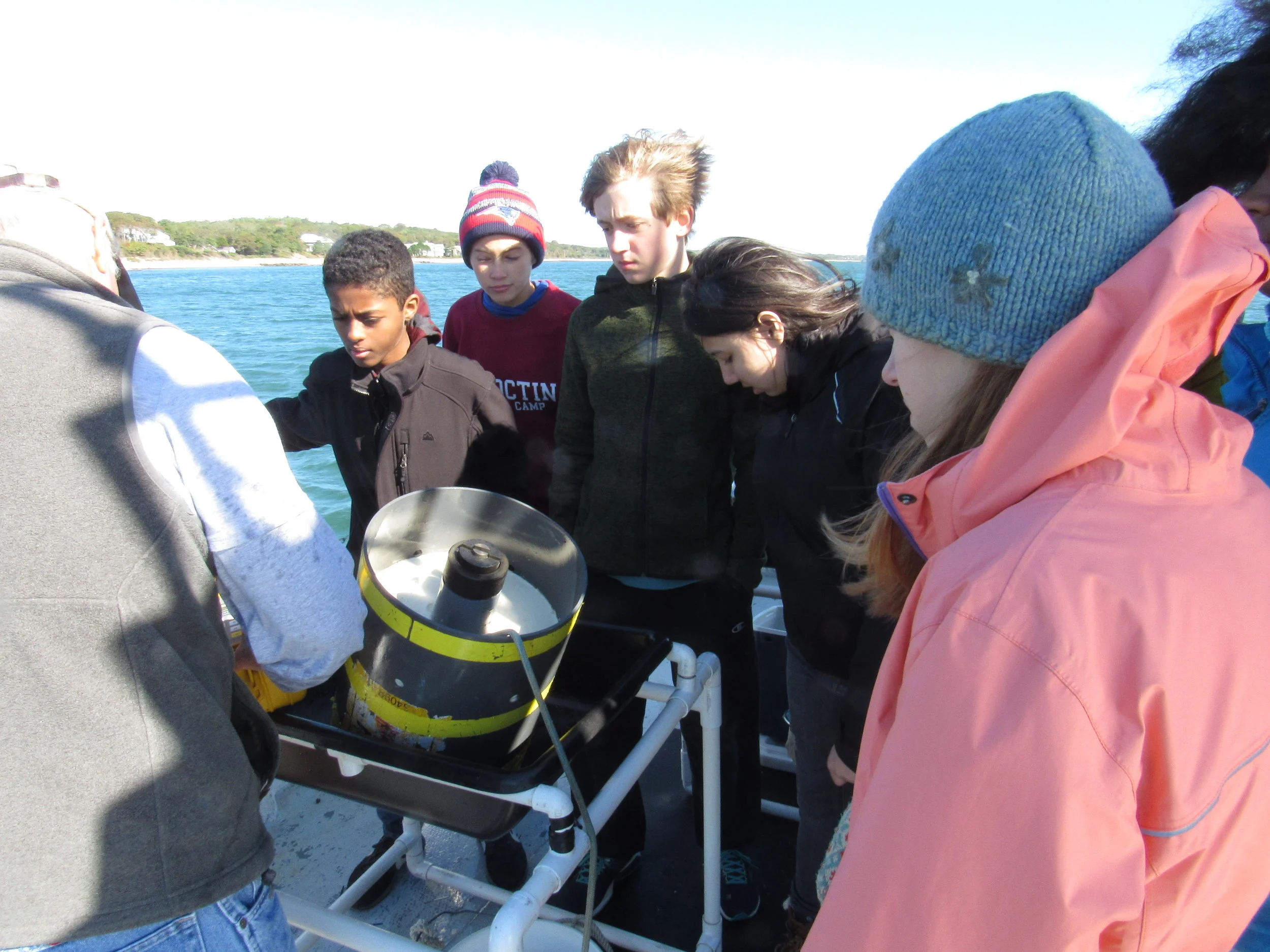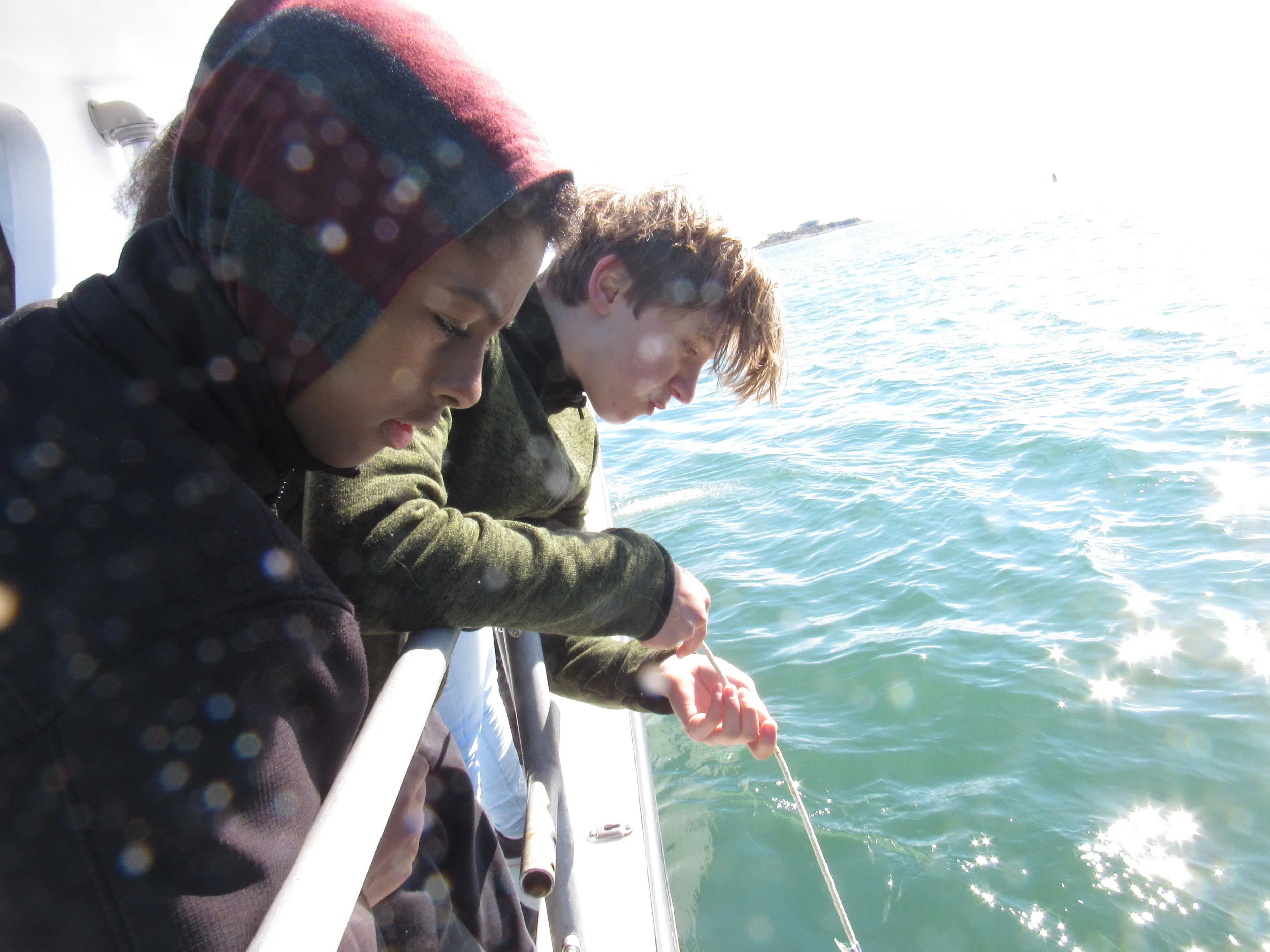Secchi Discs and Plankton Tows: Division II Goes to Woods Hole
By 8th grade student Anna
On October 19, students in Division 2 got into a van and drove to Woods Hole in southern Massachusetts. Our teacher Tasha told the class we had to arrive at school at 7:45am in order to get to Woods Hole on time to accomplish everything we wanted. It was an early – and chilly – morning for all of us!
The first thing we did when we got there was go to the Zephyr Education Foundation, which was housed in a little building on the water, near the docks of Vineyard Sound. There, we met the host who would lead us around, and he told us about rules and expectations for our time at Woods Hole.
Then we stepped onto a large fishing boat, where we met the captain and the first mate before heading off. After going at full speed for about 10 minutes, we slowed down and cast off our first experiment. One of the first things that was deployed off the side of the boat was a machine with a camera that would be dragged along the sea bottom. The point of this was to see what the ocean floor looked like in that area and to examine different ecosystems. There was a TV inside the boat where we could see what the camera was seeing. First we saw lots and lots of seaweed, and then all of a sudden the camera went dark. The first mate and our host pulled up the camera, and it was completely covered in seaweed! They pulled it all off, and we went a little further. After going for a little more time, we hit huge waves (3 - 4 feet tall!), we slowed down and put the camera machine back in. We dragged it on the ocean floor a little longer but this time we could see that there were muscles and clams littering the entire floor.
After we discussed the difference between two ecosystems, we decided to put a new device in the water: a net that would collect sea creatures. Some of the sea creatures we caught were huge sea stars and sea urchins. After being able to touch and look at the creatures, we threw them back into the water.
A little while later, we put in another device called a Secchi Disc. It looks like a black and white cookie, but split into 4 triangles, 2 black and 2 white. Connected to this was a long rope. The object of this is to figure out how far we could see into the ocean. We would uncoil the rope and drop the Secchi Disc into the ocean, slowly letting it fall until we couldn’t see it anymore. On the rope there were markings with numbers, and the numbers measured how far you could see down. My group’s Secchi Disc went all the way down until the tape showed the number 8 ft. This meant that light from the sun reaches 16 ft down into the water.
The last thing we deployed off the side of the boat was called a Plankton Tow. It was a long net, and at the bottom there was a tall cup. The plankton would go through the net into the cup and were caught there. We caught zooplankton, phytoplankton, and even some Comb Jellies!
After examining the plankton, we put them back into the ocean and made our way back to the dock. After leaving the boat, we went to a building with a lot of ocean touch tanks that held lots of different types of animals, including sea urchins, lobsters, horseshoe crabs, sea stars and moon snails. Then we went to the Woods Hole Oceanographic Exhibit Center where we got to see several exhibits, including one about the Titanic and how the scientists from Woods Hole were the ones to find it.
When we were done at the museum, we made our way back to the Zephyr Education Foundation building to have lunch. The Foundation had 3D augmented reality sandboxes. We got to experiment with the sand boxes for a little while and make all sorts of shapes and land features.
When we were done with that, it was time to go. We said goodbye and thank you to our host, got back into the van, and drove back to Meridian. All in all, even on a chilly day, this field trip was fun and adventurous!

